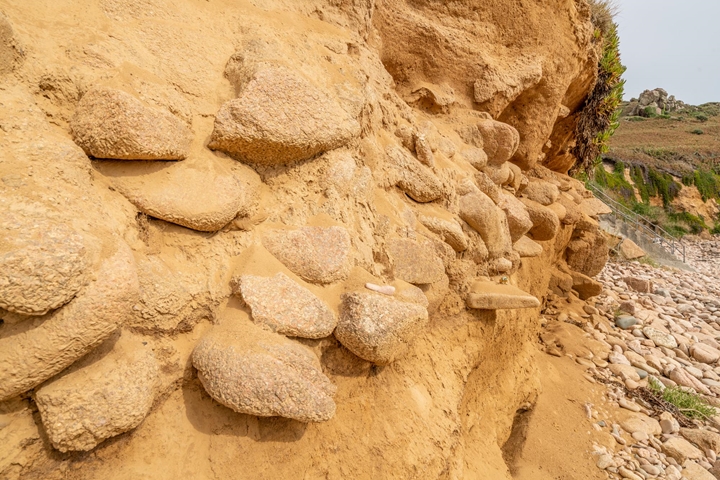Raised Beaches
There are many raised beaches around Jersey's coastline. These mark the level of past sea levels and are made up of pebbles, flints and sea bed chalk deposits.

In a warm period, global temperature becomes warmer causing the ice caps to melt. These warm periods are called interglacials. Sea levels rise as freshwater is released back into the oceans. Evidence for past changes in sea level and the shifting of the Earth’s tectonic plates can be seen today in the many raised beaches in Jersey. The highest raised beach in the Island is at South Hill in St Helier. Raised beaches are records of previous climate and can indicate the conditions in the past.
In a cold period, global temperature becomes cooler causing the ice caps to grow. This traps much of the world’s water, causing sea levels to drop as much as 200 metres. These cold periods are called glacials. Just imagine the English Channel disappearing with Jersey and Guernsey as only hills in a vast coastal plain.
Find out more about raised beaches in Jersey here.